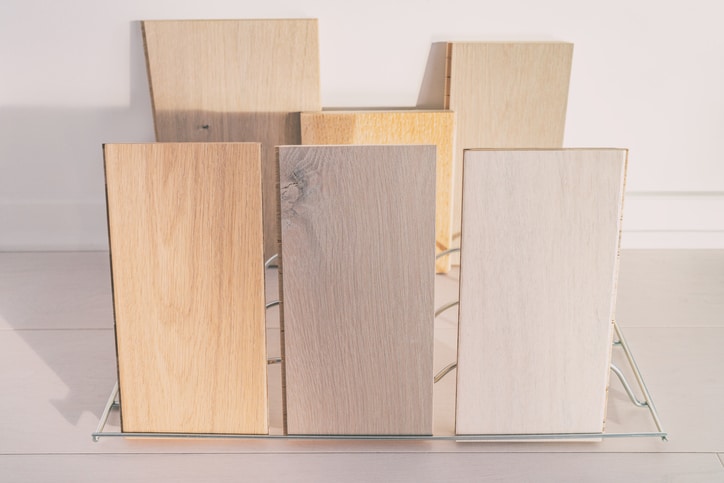When it comes to engineered wood, several different types are available, such as the many floors that are meant to emulate the exact appearance of hardwood floors but at half the cost. Each type of engineered wood has advantages and disadvantages, so it’s important to know what you’re looking for before making a purchase.
Here are some of the most common engineered wood materials.
Composite Board
Composite board is made from a combination of materials, such as recycled paper pulp or chips that have been bonded together with resin under heat and pressure. They have greater dimensional stability than solid lumber because they will not shrink or swell as much when exposed to moisture changes. They are also less likely to warp than solid lumber because they don’t contain large air pockets like solid lumber. Composite boards tend to be more expensive than solid lumber products. Still, they offer some cost savings when using expensive hardwoods in a project because less material is required than solid wood products.
Cross-laminated Timber (CLT)
Cross-laminated timber (CLT) is made by glueing layers of solid lumber into panels that are then compressed into beams or slabs. CLT panels are typically used as structural components in tall buildings because they’re strong enough to span long distances without support from additional materials like metal framing or concrete towers.
Plywood
Plywood is a type of engineered wood made from thin, parallel layers of wood glued together with a bonding agent. The layers are usually oriented in different directions (called “cross-laminated”), resulting in greater strength than solid wood. Plywood is often used to make furniture, cabinets, and other structural elements because it can be cut into large panels and joined with glue or screws.
Medium Density Fiberboard (MDF)
Medium-density fiberboard is another popular type of engineered wood that can be found at most home improvement stores. MDF is made out of sawdust and resin that has been pressed into a solid block using heat and pressure-similarly, It’s not as strong or durable as plywood. Still, it has a higher density than particleboard, making it an ideal choice for countertops, shelves and other decorative applications where appearance matters more than strength.
Laminated Veneer Lumber (LVL)
LVL is a type of lumber manufactured using a lamination process that involves glueing two or more layers of veneer to create one large panel. The process involves glueing pairs of veneers together at right angles to each other, which produces large panels with interlocking grain patterns between them. These panels are then cut into smaller pieces, which are subsequently kiln-dried before being put through a final drying process that removes excess moisture from the wood and allows it to reach its final strength level. The final product will have consistent strength throughout its entire length and width, regardless of how many layers have been laminated together to create it.
Oriented Strand Board (OSB)
This engineered wood is made by compressing strands of wood into a sheet through a process known as strandboard milling. The strands are oriented parallel to one another, so they expand and contract at the same rate, which makes them more stable than regular plywood or lumber. OSB is often used as an exterior siding material because it’s fire-resistant and has good insulation properties. It’s also used to create flooring because it resists moisture damage and is easy to install.
Laminated Strand Lumber (LSL)
LSL uses layers of smaller pieces of lumber glued together in a crosshatch pattern to form larger boards or beams. This engineered wood is manufactured using renewable resources like bamboo or pine while retaining the strength and durability of traditional lumber products like 4x4s or 2x4s with very little waste involved in the manufacturing process because all waste materials are recycled into new products or energy sources like biomass power plants.
Solid Plank
Solid planks are made from one piece of wood instead of multiple layers glued together. They look like wide boards but are thinner than traditional hardwood planks (1/8-inch thick instead of 1/4-inch). They’re usually used in place of solid hardwood floors because they’re less expensive, easier to install and easier to maintain over time. Solid planks can be sanded down and refinished over time, just like traditional hardwood planks.
Glulam
Glulam is the most commonly used engineered wood in commercial construction. It is made from small-diameter trees milled into structural beams and columns. The resulting product is strong, durable and dimensionally stable.
Conclusion
Engineered wood is a great alternative to concrete and steel for many applications. It is strong, durable and versatile. Engineered wood can create everything from houses and bridges to furniture and decorative elements. In this post, we’ve covered informative content about types of engineered wood.

Recent Comments